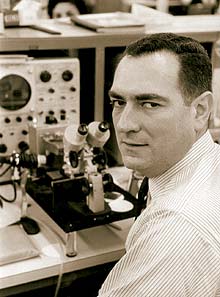
My thesis adviser in Engineering school was a fanatic about lean: lean six sigma (before it got cool, from when Deming and Taguchi were talking about it), lean manufacturing and lean engineering design teams. He also taught me about the intrinsic value of knowledge. The thesis detailed structuring engineering design teams based on the Lockheed Martin Skunks works (the old one, when they did shit hot cool work).
- Form smallest possible, focused engineering teams
- Teams have more than engineers, everything from science to prototype, manufacturing and operations would be in the team
- Give them a focused task
- Leave them the fuck alone
- The fewer the metrics and management reports and KPI’s the better. The only metric that matters is make it work within budget and time.
Plus ca change… according to Wired magazine’s excellent article on the Predator drone weaponisation. Seems the USAF took Kelly Johnson‘s principles to heart in setting up their Big Safari program at Wright-Patterson AFB.
The Predator program, only one of the most significant changes in military aviation, was a bit of an orphan,
…. most military planners at the time regarded the Predator as pretty much a technological dead end.
No big surprise then that the project only happened because of a small team of nut jobs who had the good fortune to end up working
…almost entirely free from the scrutiny of Pentagon acquisitions officers. In a series of breakthrough hacks, they hot-wired together the lethal, remotely piloted Predator over the course of just a few months in 2000 and 2001, in a mad dash to meet the heinous design challenges of a single job: to kill Osama bin Laden …
In what must be a great stroke of luck (or misfortune, depending on your viewpoint), the project was handed to Big Safari [emphasis mine].
…Like at a tech startup, Big Safari’s teams were small and horizontal. Expediency, agility, and thrift were essential. “The most important thing was to get something useful to the war fighter quickly,”…
…Ordinarily, before a modified military aircraft is dispatched into combat, it has to pass through a lengthy vetting process that can take years. But Big Safari liked to deploy its creations before they were fully polished. The team referred to this as “the 80 percent solution” (because sometimes the last 20 percent of a job takes the longest). It was like releasing the beta version of a piece of software, says Brian Raduenz, then the commander of Big Safari’s Predator detachment. “We would need to get it out there, get it into the hands of the guys doing the job, and then pay close attention to what they had to say about how it was working.”…
The “whipper-snappers” at Wired (and their buddies at Silicon Valley) would call this “hacking,” we used to call it Proper Engineering. Still do. My advisor and Eugene Kleiner would probably agree.


You must be logged in to post a comment.